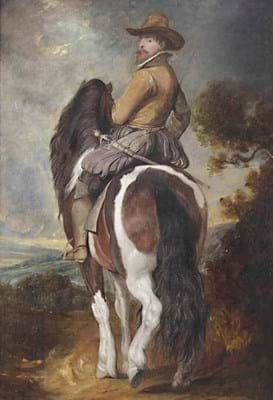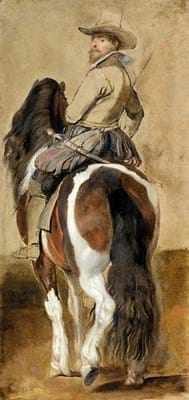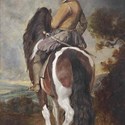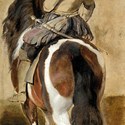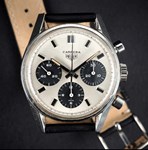Then it measured 3ft 10in high x 2ft 8in (1.18m x 82cm) and included both a landscape background and a fully worked figure wearing a yellow jacket and a Western style ten-gallon hat. At the time Christie’s referenced its similarities to an established Rubens but had deemed the picture a copy and estimated it accordingly. After it was purchased at €10,000 (£8000), the restoration work began.
As shown right, strips of canvas added in the 19th century were discarded – it now measures 22in (56cm) wide – while solvent gels were used to remove large areas of overpaint. The removal of later additions revealed a spirited and rapidly painted oil sketch, seemingly ‘drawn by the brush’ – of the type for which Sir Peter Paul Rubens is so celebrated. The rider is quickly drawn in while the subject sits on a plain background. The horse had remained unaffected by the later interventions.
Paintings of challenging subjects such as this, dated to the early 1610s, were used as models to be copied and scaled up by studio assistants. A horse in this pose can be seen in a number of Rubens’ equestrian portraits from this stage of his career.
The catalogue observed that “the aesthetic of the unfinished has historically been far less appreciated than it is today”. At Sotheby’s New York on January 25 it made the vendor a handsome profit when it was hammered down at $4.3m ($5.1m with premium), £3.412m (£4.047m with premium).


